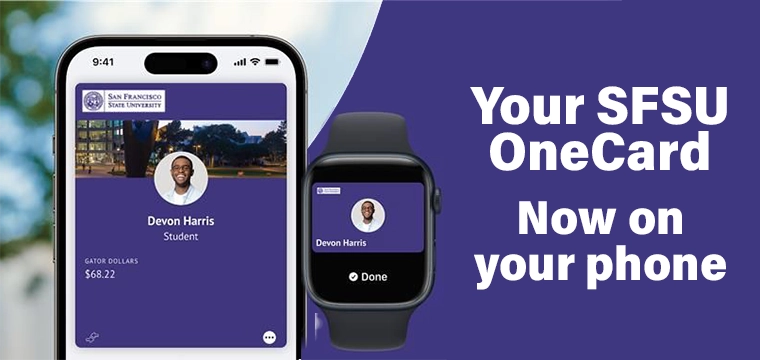
When choosing between wired and wireless, the decision can significantly impact installation costs, maintenance, operational efficiency, and security
In today's rapidly evolving technological landscape, choosing the right access control solution for your building is more critical than ever. Whether you're working on new construction or retrofitting an existing structure, the decision between wired and wireless solutions can have far-reaching implications on installation costs, maintenance, operational efficiency, and overall security. With a myriad of options available, it can be challenging to determine which system best meets your specific needs.
There may be more than just five considerations when selecting wired or wireless systems for your building and specific needs. However, some key considerations can help initiate the decision process, like advantages and drawbacks of both wired and wireless systems, and accounting for factors such as building construction and materials, Wi-Fi availability, IT infrastructure, and aesthetics. This helps enable you to make a well-informed decision that balances cost, reliability, and futureproofing for your access control system.
Choosing between wired and wireless access control systems can significantly impact installation costs, maintenance, and overall security.
Wired systems are often the preferred choice for new construction projects for several reasons. One significant benefit is eliminating ongoing maintenance tasks like changing out batteries. This can save both time and money in the long run. Additionally, wired connections are generally more reliable and less susceptible to interference compared to wireless solutions, ensuring stable and consistent performance. However, it's important to note that wired systems require a significant amount of cable footage between openings and data closets. This can be both costly and labor-intensive, making it a less attractive option for updating existing buildings.
In contrast, wireless solutions are typically more practical for retrofitting existing buildings. Wireless systems can help avoid potential issues like asbestos exposure when wiring to every door, which is particularly beneficial in older buildings where construction materials may pose a hazard. Furthermore, wireless solutions often result in lower labor and material costs as they do not require extensive cabling between doors. This can lead to significant savings in both installation and long-term maintenance.
Wireless access control solutions offer practical advantages for retrofitting older buildings, avoiding issues like asbestos exposure and reducing labor costs.
A building's construction and materials play a crucial role in the effectiveness of wireless systems. It is essential to ensure that wireless data can get through the building materials, as some materials, such as concrete or metal, may block or weaken signals, affecting the system's reliability. The absence of extensive cabling can be particularly advantageous in buildings with complex layouts or challenging construction materials, leading to both cost and time savings.
Before opting for a wireless solution, it's essential to verify if Wi-Fi is available and reliable throughout your building. A robust Wi-Fi network is crucial for the effective functioning of wireless access control systems. Without a dependable Wi-Fi infrastructure, the performance of wireless systems can be compromised, leading to potential security risks and operational inefficiencies.
A robust Wi-Fi network is crucial for the effective functioning of wireless access control systems, ensuring reliability and security.
Consider your IT department’s policy and the network's capacity for handling unique IP addresses per door. This can impact the scalability and management of your wireless system. If your IT infrastructure is not equipped to handle a large number of unique IP addresses, you may need to explore alternative solutions. Understanding these limitations beforehand can save time and resources in the long run.
Different doors may have different requirements, and it's essential to assess these needs carefully. For example, determine if you can live with intermittent communication or if near real-time communication is necessary. High-security areas may require real-time monitoring and immediate response capabilities to ensure safety and security. Additionally, evaluate if doors require lockdown capabilities or alarms during certain conditions. This is particularly important for areas that need to be secured quickly in case of an emergency, ensuring that the access control system meets all security requirements.
Also consider whether certain doors should be always locked, like student dorm room doors, or if the opening may benefit from a schedule where they unlock during normal academic hours and relock at the end of the day, like the entrance to an academic or residence hall. Perimeter doors and openings with higher traffic during certain periods of the day tend to benefit most from the convenience of such schedules. Alternatively, there are some openings that may benefit from being locked and unlocked manually, like faculty offices where the individuals’ convenience matters. Heads up—local codes may dictate how and when electronic locks and automatic locking features are used across campus, so be sure to consult with a code expert.
Evaluate what credential technologies you currently use and what you might adopt in the future. Consider if a large deployment justifies transitioning to advanced credential technologies like high security smartcards or digital credentials in Apple Wallets for iPhones or Google Wallets for Android phones. This can enhance security and user convenience, making it easier for authorized personnel to gain access while maintaining high security standards.
Many colleges and universities are evaluating digital wallet capabilities because of the increased security blended with an enhanced student experience. Not only is it convenient for busy students on the go, but it helps alleviate the burden of creating and correctly distributing physical cards to thousands of students arriving on campus for their first year.
Factor in the ongoing costs associated with your chosen solution. Are you prepared for the maintenance involved in changing batteries? Wireless systems often require regular battery replacements, which can be time-consuming and costly. Additionally, understand the manufacturer’s warranty policy and whether you can self-repair or need to replace components entirely. This can impact both the cost and downtime associated with maintenance, so it's crucial to have a clear understanding of these aspects.
Don't overlook the mechanical aspects of electronic locks. Ensure locks can withstand the wear and tear commonly found in high-abuse and high-traffic environments like colleges and universities. Some doors, like those at the entrances of residence halls, academic buildings, or the student union, may be opened thousands of times on any given school day, putting significant wear and tear on hardware. ANSI BHMA Grade 1 locks are highly recommended for campus environments due to their durability.
High-traffic doors’ – especially exterior or perimeter doors – may be better served by “fixed” hardware. For example, to maximize the life and minimize the maintenance of the door hardware, a fixed pull exit trim on an exit device may be a more appropriate solution than a dynamic wireless lock that requires thousands of rotations and pull force on a lock handle.
In addition to the number of high cycles and abuse the perimeter door hardware experiences, high-traffic doors’ batteries may drain quickly, so these openings will be better served by a line-powered access hardware than battery-powered wireless locks.
Some doors, like those at the entrances of residence halls, academic buildings, or the student union, may be opened thousands of times on any given school day, putting significant wear and tear on hardware.
And while we are talking about battery life, when wireless lock options are being evaluated at lower use openings, choose a product that minimizes the frequency of battery replacement. Battery performance and efficiency do vary from manufacturer to manufacturer.
Consider if you need key overrides and whether these locks should be on the same mechanical key system as the rest of the campus. This can provide a backup method of access in case of electronic failures or where battery power has been exhausted, ensuring that security and access are maintained at all times. You may also need to consider deploying a new or separate key system if the campus key system is out of control.
Finally, think about the aesthetics of the locks. Select styles and finishes that complement the design of your space. This can enhance the overall look and feel of your building while providing the necessary security features. Balancing functionality and aesthetics ensure that the access control system not only meets security requirements but also contributes to the building's visual appeal.
Choosing between wired and wireless access control solutions is a complex decision that requires careful consideration of various factors. Both options come with their own set of advantages and drawbacks, making it essential to evaluate your specific needs and constraints thoroughly.
Making an informed decision about wired versus wireless access control solutions involves a comprehensive evaluation of your building's needs, construction materials, IT infrastructure and long-term maintenance considerations. By weighing these factors carefully, you can select a system that balances cost, reliability, and futureproofing, ultimately enhancing the security and functionality of your building.




